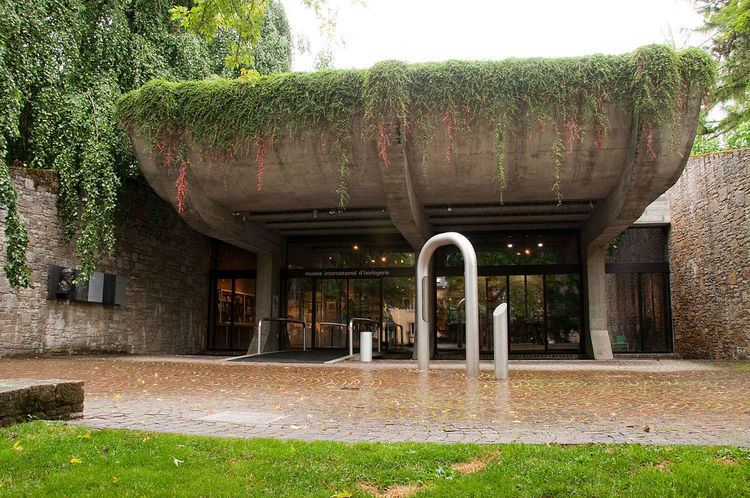Established 1974 Phone +41 32 967 68 61 | ||
 | ||
Hours Open today · 10AM–5PMTuesday10AM–5PMWednesday10AM–5PMThursday10AM–5PMFriday10AM–5PMSaturday10AM–5PMSunday10AM–5PMMondayClosed Similar Watch Museum of Le Locle, Château des Monts, Villa Jeanneret‑Perret, Bois du Petit‑Château, Musée des beaux‑arts de La Ch | ||
Mission of the international museum of horology of la chaux de fonds
The International Museum of Horology, French: Musée international d'horlogerie (MIH), is a museum in La Chaux-de-Fonds, Switzerland, dedicated to horology, which is the study of time, timekeeping and timekeeping devices (primarily clocks and watches). The museum is owned and operated by the city of La Chaux-de-Fonds.
Contents
- Mission of the international museum of horology of la chaux de fonds
- History
- Collection
- Affiliated organizations
- References
Historically the city of La Chaux-de-Fonds is considered one of the focal points of the Swiss watchmaking industries and the home of one of the country's famous watchmaking schools. The museum grew out of the study collection of the school, and is considered today among the broadest and most comprehensive watch and clock museums of the world. In addition to constantly changing temporary exhibits the museum features permanent displays from its vast collection of watches and clocks throughout history. While the collection is obviously strong on Swiss pieces it covers most places where timekeepers were made in any quantity.
To just get a general overview of the holdings will take at least an hour, a highlights tour will be half a day, but it is easy to spend more time there. Visitors who make a trip to La Chaux-de-Fonds to see MIH will typically also want to visit the Musée d'Horlogerie du Locle a smaller horological museum in the neighboring town of Le Locle, which complements MIH.
Both Le Locle and its geographical twin town La Chaux-de-Fonds have now been recognised as an UNESCO World Heritage Site, for their horological and related cultural past.
History
In 1865 the Watchmaking School of La Chaux-de-Fonds had the idea of putting together a collection of old clocks. This resulted, in 1902, in the opening of a small museum in the same building as the school. The collection gradually grew and the museum was enlarged three times, in 1907, 1952 and 1967.
It finally became clear that the premises were no longer suitable for a permanent and functional display of the whole collection. The Committee of the Museum therefore suggested to the Municipality of La Chaux-de-Fonds that a foundation should be set up with the purpose of promoting the construction of a new building. Opened in 1974 under the name of Musée international d'horlogerie, this was characterized by a conception and techniques in the avant-garde of architecture and museography. Three decades later its construction is as fascinating as its exhibits.
Collection
Major highlights of the exhibits include:
Outside of the museum, on its roof, is a major 20th-century carillon clock.
In addition to its permanent exhibitions, MIH regularly produces special temporary exhibitions on various aspects of timekeeping or time.
